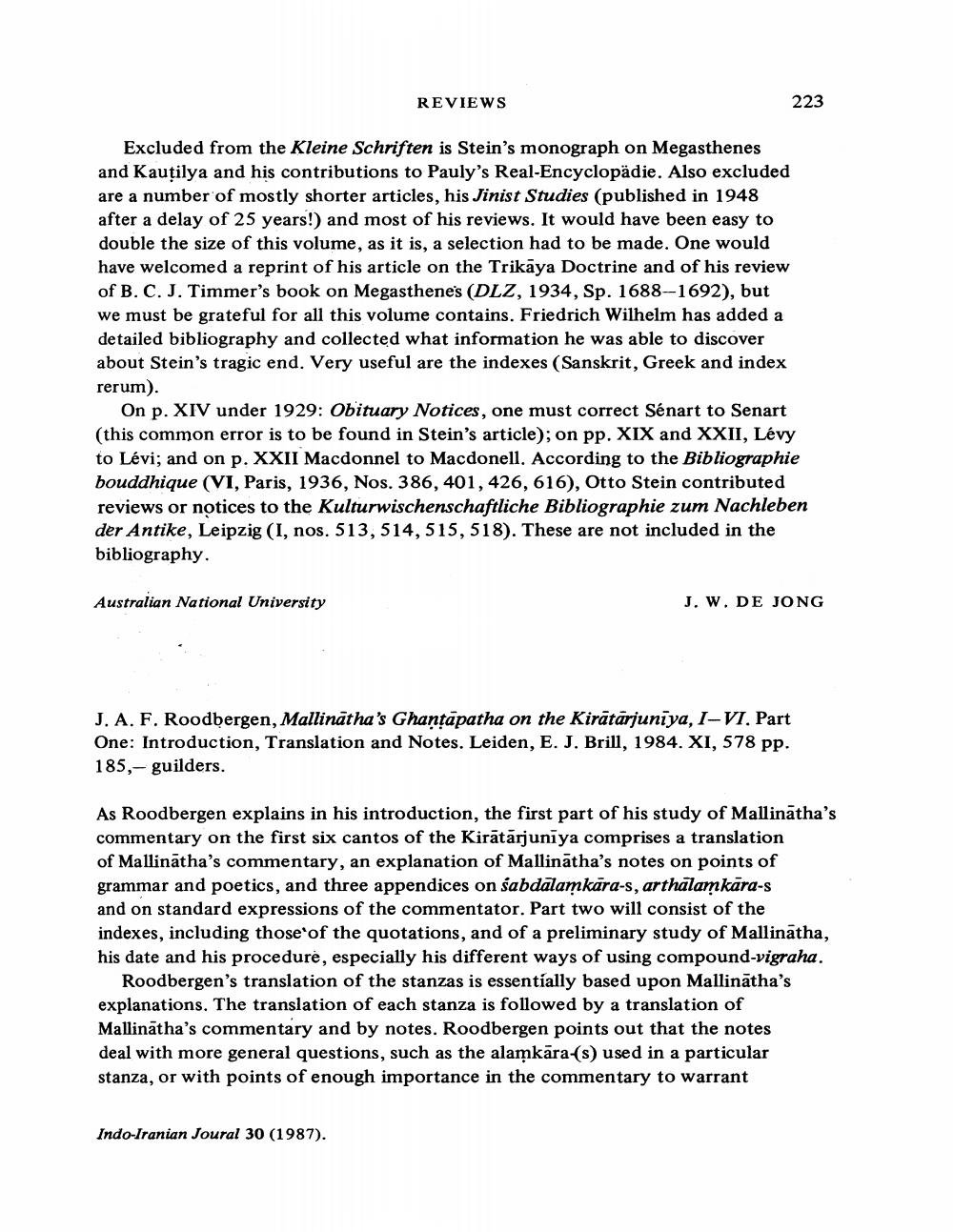________________
REVIEWS
223
Excluded from the Kleine Schriften is Stein's monograph on Megasthenes and Kautilya and his contributions to Pauly's Real-Encyclopädie. Also excluded are a number of mostly shorter articles, his Jinist Studies (published in 1948 after a delay of 25 years!) and most of his reviews. It would have been easy to double the size of this volume, as it is, a selection had to be made. One would have welcomed a reprint of his article on the Trikāya Doctrine and of his review of B. C. J. Timmer's book on Megasthenes (DLZ, 1934, Sp. 1688-1692), but we must be grateful for all this volume contains. Friedrich Wilhelm has added a detailed bibliography and collected what information he was able to discover about Stein's tragic end. Very useful are the indexes (Sanskrit, Greek and index rerum).
On p. XIV under 1929: Obituary Notices, one must correct Sénart to Senart (this common error is to be found in Stein's article); on pp. XIX and XXII, Lévy to Lévi; and on p. XXII Macdonnel to Macdonell. According to the Bibliographie bouddhique (VI, Paris, 1936, Nos. 386, 401, 426,616), Otto Stein contributed reviews or notices to the Kulturwischenschaftliche Bibliographie zum Nachleben der Antike, Leipzig (I, nos. 513, 514,515, 518). These are not included in the bibliography.
Australian National University
J. W. DE JONG
J. A. F. Roodbergen, Mallinātha's Ghantāpatha on the Kirātārjuniya, I-VI. Part One: Introduction, Translation and Notes. Leiden, E. J. Brill, 1984. XI, 578 pp. 185,- guilders.
As Roodbergen explains in his introduction, the first part of his study of Mallinātha's commentary on the first six cantos of the Kirātārjunīya comprises a translation of Mallinātha's commentary, an explanation of Mallinātha's notes on points of grammar and poetics, and three appendices on sabdalamkāra-s, arthalamkāra-s and on standard expressions of the commentator. Part two will consist of the indexes, including those of the quotations, and of a preliminary study of Mallinātha, his date and his procedure, especially his different ways of using compound-vigraha.
Roodbergen's translation of the stanzas is essentially based upon Mallinātha's explanations. The translation of each stanza is followed by a translation of Mallinātha's commentary and by notes. Roodbergen points out that the notes deal with more general questions, such as the alamkāra-(s) used in a particular stanza, or with points of enough importance in the commentary to warrant
Indo-Iranian Joural 30 (1987).




